In this article I discuss how I have come to understand embodied processes in my visual art practice using photography. I danced professionally for 25 years and performed in various contexts including classical ballet repertoire, contemporary dance, and commercial dance. I choreographed for various productions working with a group of dancers for seven years before studying visual art. I experienced a particular sense of embodiment as a live performer in which prescribed movements were learnt, performed and repeated as if second nature. Transitioning into a conceptually based visual art practice the creative process was flipped around. Using painting, sculpture, performance (in a different context) and photographic methods I explored ideas from which forms such as video/audio installations, photography, performance art and painting emerged mostly in a gallery context. Although I still think of forms of movement as content, in a visual art practise the idea or concept invokes form. Figure 1 is an example of an early work coming out of an exploration into the condition of embodiment.
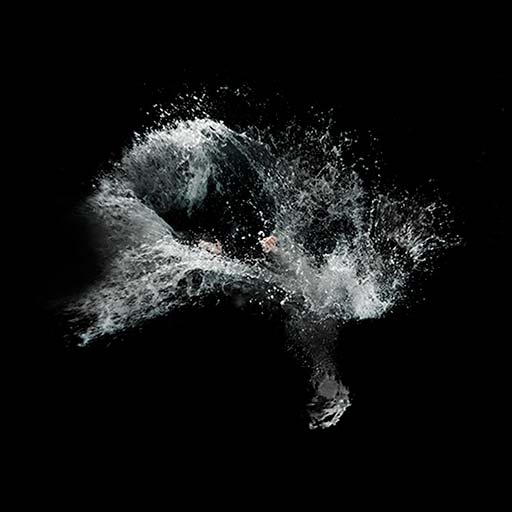 Figure 1: Wilson, A. 2014, Coathanger, 75 x 75 cms, digital print on Arches Velin Rag Paper
Figure 1: Wilson, A. 2014, Coathanger, 75 x 75 cms, digital print on Arches Velin Rag PaperPrivileging the idea over medium and form, I encountered a photographic process that shifted an external sense of embodiment (as a performer) to an internal consciousness of embodiment. My rules for shooting the above image facilitated an exploration into what embodiment might look like. I performed ‘the bomb’ into a swimming pool using specific lighting set up to capture and emphasise a moment in which the trace of the body’s movement could become visual. The pool has been blacked out in post production leaving the mark of the body’s impact. I performed the ‘bomb’ or ‘plank’ as part of an ongoing conceptual concern in my practice. In this article I refer to recent works that relate closely to my discussion of the employment of movement improvisation in my visual arts practice. I stumbled upon a way of shooting that provided a method in which I actualise imagery using a bodily sense of light to measure times of exposure in the camera. Images materialise as a map, a drawing of light, caused through interactivity with light in motion. I seek to deconstruct how embodiment occurs in my visual art practice and to observe similarities and differences through improvisation practice and theory.
While shooting with a bespoke camera as distinct from an objectifying experience of conventional photography and by moving in conjunction with bodily knowledge of light I have been able to understand deeply embedded memories that were otherwise hidden. I am exploring how improvisational practice synergises with performative actions. My process is one in which I consider the finished product to be secondary to physical movements necessary to make still images within practice led research in visual art as the art. An artefact such as a photograph relies upon this process to be realised. Upon reflection I argue that bodily actions and spontaneity are the essence of my enquiry and as Goldman writes:
Performance and composition occur simultaneously—on the spot—through a practice that values surprise, innovation, and the vicissitudes of process rather than the fixed glory of a finished product. (Goldman 2010, p. 5)
Performance and composition are simultaneous when I shoot. Surprise and innovation are framed within a process I describe later and changes of movement evidenced in the prints come out of ‘vicissitudes of process’. When I take photos I engage my body to see rather than looking through the viewfinder of the camera and in this way process is unpredictable—changes of directions, speed, dynamics and bodily form in action is a result of how I read light which also changes unpredictably. This process comes out of a previous exploration into how embodiment, using photography has resulted in cross-disciplinary practice between visual art and somatic dance. In this article I uncover what, why and how processes may be conceived as improvisational (Wilson 2015). By deconstructing actions I made while shooting imagery I hope to tease out the vicissitudes of process more deeply. Hidden memories coming from the act of moving while taking photographs in an improvisational manner, as I explain later, emerge in process, during actions creating new knowledge. In this way:
Improvisation is a form of research, a way of peering into the complex natural system that is a human being. It is, in a sense, another way of ‘thinking,’ but on that produces ideas impossible to conceive in stillness. (de Spain 2003, p. 27)
My project contains all of the descriptors from this text. I shall describe my process subjectively and objectively and by referring to artworks during the improvisational moment. As a starting point to contextualise my process within improvisational theory and practice, I would like to articulate differences and similarities (between visual art and improvisation) I have observed so far:
Similarities
- Improvisation reveals hidden knowledge that can only be experienced through moving
- Improvisation often happens through contact, in my process contact is made between my body and light via a camera
- Improvisational practice is spontaneous
- Improvisational practice comes from habitual bodily knowledge that has become as if second nature from a tight place (Goldman 2010)
- Improvisational practice is often perceived as having a liberating effect, released through new experience of movement and embodiment (Goldman 2010)
Differences
- Performance within improvisational practice often has an audience
- Improvisational practice comes out of deep and sustained physical awareness through focused attention on bodily movement
- Visual art practice by contrast may hypothetically include a similar focus on the body within another overarching enquiry
- Performativity in practice led research in visual art is conceived of differently in improvisational dance practice which I shall discuss later.
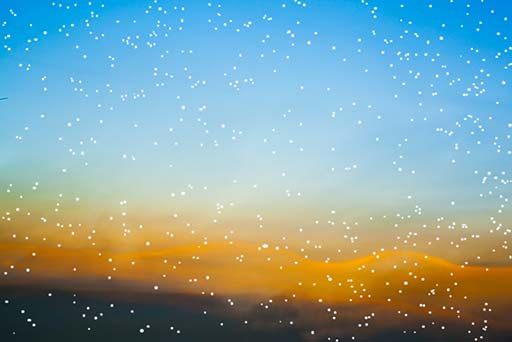 Figure 2: Wilson, A. 2015, Performative Landscape # 3, 60 x 100 cms, digital print on Ilford Gloss Paper
Figure 2: Wilson, A. 2015, Performative Landscape # 3, 60 x 100 cms, digital print on Ilford Gloss PaperExplanation of my process
Performative Landscape #3 was made entirely in the camera. A filter or a graphical drawing has not been applied in post-production to make the pattern and number of white spaces on top of the landscape. The spots are within the actual file and map bodily changes of direction as I shot while moving in a car (a process I will describe in detail). I have learnt to interpret light’s time physically as it reflects off various surfaces when imagery is passing by. As the car in which I travel moves, I move the camera to ‘pick up’ light, drawing a pattern that contains what appears to be a landscape, together with markers of changes in direction determined by my interpretation of light momentarily.
For example, while creating the above picture I was travelling through the Dandenongs towards sunset and a large amount of light came from the sun sitting on the horizon, appearing through trees, or mountains that blocked the view occasionally. My shot takes around 7 seconds and I read light, picking up elements of it over that time, making choices of where, when and for how long to move based upon my bodily knowledge of light in relation to the camera. I have learnt light’s timing, which initiates how I move. I might point the camera towards a darker part of what is flying past then quickly move it towards the actual sun for a very short time using my knowledge of its strength in relation to how my camera works. Thus my movements occur in the moment based upon light speed, my speed and light’s strength within several seconds. The white dots are aberrations of light on the file in which there are two time signatures—a darker and a lighter colour sit on top of each other—in the above image I have taken the marks out leaving white spaces to identify a map depicting changes of direction. In conventional photography a still camera with a very short exposure time doesn’t have to deal with these changes of light and so it does not usually show up in an image. Performative Landscape #3 reveals the background as the landscape and the points at which I move as white dots—a kind of map of my relationship with light in motion. I learnt photography by reading light physically that developed a habitual way of moving from a tight place. (Goldman 2010). My tight place comes from habitually formed movements in relation to light’s movement predicated on the laws of photography, specifically the rule of reciprocity which I will describe later.
Photographs come from light forming an image over time onto a photosensitive surface. I am supported by quantum physics’ postulation that light changes when being observed, in suggesting that my relationship with light is interactive. I use the camera while moving without looking through its viewfinder. It is at the end of my arm moving in response to light’s movement as perceived through my body (learnt through practice inside the human size camera) manifesting in a still image of movement. Contact with light in my process is spontaneously occurring in the moment. My rules of engagement are formed out of reciprocal, inter-dependent relationships: between light’s undulating strength, surfaces and shapes viewed in movement, my own movements and that of a vehicle (or not). Rhythms and speeds are marked on the film or sensor surface through an interdependence of light with movement/s, camera’s setting, surface quality and my knowledge. The speed at which I move and change directions is determined ‘in the moment’ only. Decisions of how long to leave my arm and body in one place, how quickly to move it to another and how long the total movement can be depends on a physical understanding of light, movement and exposure times within a camera and is achieved through repetitive practice. The improvisational moment begins in stillness and moves into action during the shoot.
Stillness consists of hours of observing light inside a human-size camera obscura and learning to respond to momentary changes and interpret that response into photographic language specifically for developing skills to facilitate photography’s rule of reciprocity which I describe later. For example, in the image below I was speeding past a cluster of trees closely observing within light which initiated a movement of vertical motions with my arm pointing the camera at the sky where light is strongest, resting momentarily there, then moving my arm and body down towards shadows at the base of the trees at a speed determined by its strength and affect on the film/sensor surface.
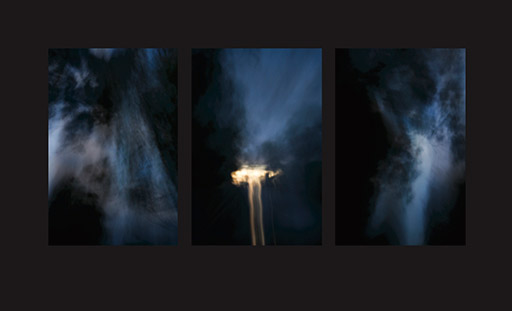 Figure 3: Wilson, A. 2013. Portrait Landscape, 118 x 84 cms, digital pinhole print on Museo Portfolio Rag
Figure 3: Wilson, A. 2013. Portrait Landscape, 118 x 84 cms, digital pinhole print on Museo Portfolio RagI took the two outside panels in the image while outside of the car—the central image was taken while moving in the car as the sun was setting in front of me. I intentionally set up situations that challenge me and play with light, by choosing the time of day, form of landscape or urban site, speed of the car or body, choice of objects and shapes. For example in Portrait Landscape above I chose to travel through the Dandenongs in winter at a time and angle that captured the deceleration of light. The imagery is not improvisational—it is a memorial of the improvisational process, a trace of my body’s movement while I was in that moment. I move at a certain speed, slowing down and speeding up depending on how I am interpreting the rule of reciprocity in the moment of light’s speed. My rules of engagement have a synergy with an idea of composition which I understand in a general way, drawing on how it can sometimes be used in improvisational practice and the rules I apply to it form a framework and context to improvise within which I think of as a tight place (Goldman 2010) from which movement arises based in knowledge of photography.
Even though there is no audience I consider the process to be a performative act. The word performance in the context of my process relates to visual art’s claims of performativity in practice led research. Following Bolt’s postulation that performativity occurs within the ‘creation of an artifact through repetitive actions—and re iterations of a singular idea’ (Bolt 2009), I perceive my process as performative. My project sits with an overarching enquiry in which I reflect on conditions of embodiment—particularly through movement. My process is a re iteration of a research question. Specifically my performativity engages habitual memory through learning to read and use light in a playful and challenging way. Initiated by inquiry into the research question my process aligns with the idea that ‘art practice is performative in that it enacts or produces ‘art’ as an effect’. (Bolt 2009)
A subjective description of my process: improvisational practice and habitual bodily memories within visual art practice using a bespoke camera
I feel that learning dance and learning to read light have something in common in the way they create habitual memories (experienced as second nature). When writing a chapter titled ‘The Immersive Experience’ (Wilson 2009) for my PhD I attempted to describe the way I conceive moving within the studio to have meaning and how this connects to video works in a gallery context. Trying to grapple with existing knowledge of movement experienced as embedded memories I aimed to explore how embodiment translates from a dance/performance context into a visual art performative context.
Writing about the immersive experience helped to connect the impact of embedded memory in different contexts. At that time, in the process of making art works, combinations of movements I had learnt came to me as I moved about the studio or researched ideas, particularly those exploring concepts such as movement and memory. Figure 4 is an example of a work that explores the body in motion, a static moment depicted in ‘play’ with dynamics of movement.
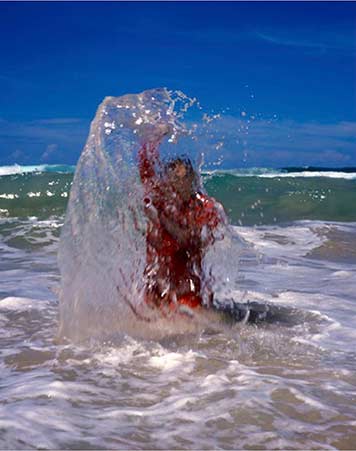 Figure 4: Wilson, A. 2009, Terminator, 120 x 100 cm, digital print on metallic paper
Figure 4: Wilson, A. 2009, Terminator, 120 x 100 cm, digital print on metallic paperI am aware of how abstract meanings are attached to memories of dance compositions in my body—it is personal, yet at one time dance compositions performed constituted communication with an audience. I can always recall compositions performed to a live audience. These memories have connections to my physiology as, when learning to co ordinate my body aiming for technical proficiency, I embodied sequences that still exist within me. Even though years have passed corporeal memories, whether I am still performing or not, have been a communicative tool and as such I know those movements as language albeit personal and abstract.
As I develop new work in the visual art I continue to think in movement. For me how I navigate the world mentally and physically continuously influences my work. (Bolt 2009). I often look at video art to reflect on how rhythms convey meaning and how dynamics of movement and juxtapositions of speeds are used by various artists. When writing the chapter I thought on how procedural and declarative memory affects how I read movement. I read the work of Bill Viola for example, who used super slow motion to expose subtexts, dialogues between actors not usually seen at normal speeds. By reflecting on speed in video works and how that affected the viewer in a gallery context I understood the potential of using movement to either trigger habitually formed memories of movement perhaps embodied unconsciously. Slowness for example revealed unconscious or procedural memories of moving in habitual ways, by making what is not usually visible to be revisited. Viewing Viola’s work helped me understand how my body’s movements must have, at sometime been learnt, like knowing how to walk. Movement in slowness exposed how time and speed contributes to how memories are formed while learning to move.
I understood when writing the chapter the tight place Goldman speaks of as habitually formed movements that were once learnt (Goldman 2010). I spent 15 years training in ballet and performing in the corps de ballet and another 20 years training and performing in musicals, commercial events and contemporary dance projects. As I began my work as a visual artist memories from my dancing years embedded at a cellular level surfaced. For example while thinking about how to create a work to explore embodiment, an image will come to me of a learnt choreographed sequence of movements. I can remember developing a video work that I storyboarded mentally into 3 different movements—the first involved a figure running up a hill and through a wall into water. I saw the figure’s movement as a kind of choreography with a pace and rhythm I related to through live performance. Eventually I dropped the figure running up the hill and made one scene of people speaking underwater, a decision that favoured a language of movement over a literal narrative, distilling the idea into a single set of physical conditions applied to bodies in motion.
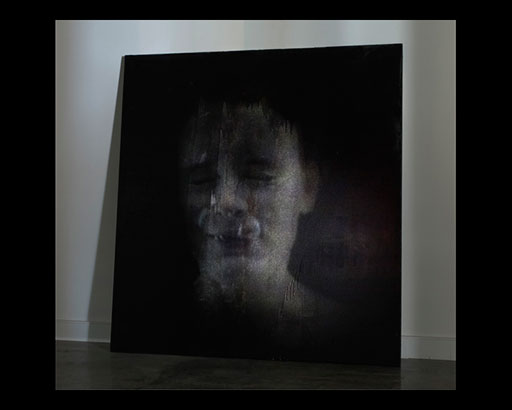 Figure 5: Wilson, A. 2010, Installation view, Conversation, Monash University Gallery, video projection onto painted canvas 200 x 200cm
Figure 5: Wilson, A. 2010, Installation view, Conversation, Monash University Gallery, video projection onto painted canvas 200 x 200cmBecause of this pervasive condition of memory situated within my body and mind as I transferred my practice from performance to visual art I have considered that all movements learnt at some time in my life seem to be framed by rules defined by their function whether a performance, pedestrian movements or moving in my studio towards and away from a painting.
Similarly a rule of reciprocity is intrinsic to photographic practice. From my experience, correct exposure is achieved by balancing a few interdependent conditions of light. Before I could use photography confidently I needed to understand the camera physically, so I built a human size primitive camera and ‘played’ inside observing light to know how each element affected the other. I began to appreciate how a two dimensional image inside a camera is created similarly in sight through our eyes, by a light safe container with a small hole, that is, the pupil of the eye letting light into the eyeball. I learnt in a tight place (Goldman 2013) from which improvisational actions emerged as limitations contained within mechanics of the camera and sight.
An example of how the rule of reciprocity works in photography
Correct exposure occurs with full expression of tones–details in the shadows and details in the highlights, in a full colour gamut (depending on the limits of printers, screens or paper upon which it sits). This in turn is affected by light’s speed and strength travelling through the aperture or hole; it’s size and shutter speed:
The rule of reciprocity engages three parts of a camera: the aperture or hole, the photosensitive surface either film or digital sensor and the shutter speed or the amount of time the hole is left open. Each relies upon the other to create an image that looks like that we see. The digital sensor is different than when using film in that its sensitivity can be increased or magnified allowing for faster shutter speeds than ordinarily available with film.
If I use a small aperture light comes in more slowly and there is finer detail in the image with a long depth of field. This means everything within the image is as sharp as everything else. A large hole lets light in more quickly and depending on time it will create a shallow depth of field meaning a part of the image will be sharp with other parts blurry. Added to this the sensor or surface, upon which light fixes the image, can be set to respond more quickly or slowly to light. Learning to read light for the camera is about understanding these variables. I can use the camera’s light meter to tell me what size hole is needed and for how long to achieve correct exposure. It is also possible to use an external light meter, however I chose to learn the rules physically and to witness the rule in action. By observation of light inside a human size camera ie a large light safe container I could walk into, with a hole on one side and a white surface opposite I practised how correct exposure could be achieved. On the inside of the construction was a piece of gaffa tape, a flap covering a hole and if I uncovered the hole the back wall would light up to reveal a two dimensional image of the world outside upside down. When inside I would expose black and white photo-sensitive paper to light for a certain amount of time then develop it in the darkroom.
Through repeating this process at different times of day in different light situations I learned to judge times of exposure. I also made different size holes that could slow down or speed up light’s journey onto the surface. After several months practise I developed a sensory ‘intuition’ of the strength and speed of light in relation to the camera. Intuition based on habitual movements in response to light’s momentary changes. Movements such as changing the position of the paper, moving the paper closer to the hole, altering the time I let light in by closing the aperture and pulling down the piece of gaffa building up a movement memory.
After practising and teaching inside the primitive camera I used a pinhole camera outside and exposed film and polaroids for long times at sunset, overnight and at sunrise to further develop my skills. I practised by observing how light’s intensity affected exposure times and qualities of images left on the sensor or paper outside the darkness of the camera obscura. Photographs taken at the change of light as distinct from high contrast images shot during the middle of the day when the sun was strongest exhibit a glow fixing light’s changing character as it becomes stronger or weaker over time. Called ‘The Magic Hour’ photographers and film-makers use this quality to create a romantic effect. In these situations I used a tripod and exposed the pinhole camera for up to 12 hours. I practised so much that reading light in relation to a camera and ‘capturing’ an image became embedded mentally and physically. This meant that the actions of using the camera were not unlike improvised seeing as I respond to variables. My habitual memory triggered what had become ‘automatic’ learnt during periods of reflection, trials and failures in stillness and movement.
After taking photos with the pinhole camera, I had a lens cap engineered by a jeweller with F160 aperture, a tiny hole to slow light’s speed attached to my Canon 5D Mark 2 digital camera. As an experiment I wanted to see what would happen as I could change the receptivity of the sensor in more extreme ways than with film. This allowed another element to enter into the rule of reciprocity—the speed of fixing the image. Keen to experience a direct contact with light, a camera without a lens creates a direct hit on the sensor. Lens can bend light, speed it up and slow it down and magnify the image. I surmised that without a lens that I would be able to put into action what I witnessed inside the camera obscura.
An improvisational moment discovered
Once, while in the hills of Bruny Island in Tasmania as my friend was driving the car slowly as the sun was setting in a hilly terrain, I picked up my camera fixed with the F160 lens cap and absent-mindedly began to move it at the end my arm, picking up light’s reflective traces here and there—pointing towards trees travelling on my right, then swinging the camera over the other side picking up light off rocks. Each surface required a different movement to achieve an exposure. The camera set to ‘bulb’ a setting in which the aperture is permanently opened until I choose to close it, meant I could control the amount of time needed to achieve exposure. I found these sustained movements with the camera in relation to the car’s speed and the landscape came from habitual bodily knowledge of light.
This was fun (which came as a surprise) playing with light constrained by rules of reciprocity. I was in a kind of reverie while physically engaged. When I began shooting like this, I perceived the improvisational moment had begun in stillness during observation of light’s movement while inside the camera obscura transforming into action during the shoot. I began to understand deep feelings, memories that were otherwise hidden could not have been revealed except through movement, in response to and in collaboration with light speed.
Unifying nature of light
Robert Lanza’a Theory of Everything claims ‘that life creates the universe instead of the other way around. In this new paradigm, life is not just an accidental byproduct of the laws of physics’ (Lanza 2012). Light is interactive and changes when observed so as I focus throughout improvisational moments I don’t think I am alone–I know I am responding to light as I move and I move in a playful way to test light’s effect on my camera. During the shoot I forget the camera and think of the way light is in motion—I make changes based on how light is moving not unlike dancing with a partner. It is spontaneous. I create… the universe in that moment through a direct interaction with light. Lanza’s theory that we co-create the universe fits neatly with my experience however subjective. I conceive the universe through how I perceive it and in the context of my shoot it is experienced in a specific way that is reciprocal and alive a reciprocity created between light and me only available while moving. A still shoot would create a different experience. Moving engages a sense of creativity of co creation and embodiment.
After making several shoots and during the time I learnt and responded to light inside the camera a somatic experience began to materialise –in the prints which I see as movement in stillness (Wilson 2015), a kind of map showing interactions between my perception and play with light and the camera’s ability to handle changes in direction over time.
 Figure 6: Wilson, A. 2015, 9 Incarnations, 75 x 75 cms, lightbox
Figure 6: Wilson, A. 2015, 9 Incarnations, 75 x 75 cms, lightboxIn the work above I travelled in a car on dirt roads towards sunset. I moved the camera vertically in response to differing light situations. Each exposure was about eight seconds depending on how fast the car was moving and the reflectivity of surfaces I pointed the camera together with deceleration of the sun’s light. I see the prints as a record of that moment, like a map of time and space as experienced through my body in an improvised play with light. However a more profound exchange occurred during the shoot than by looking at prints. The actions produced what seemed to be early memories, perhaps for example as a baby in the sun, of embodiment.
A re assessment of my process through the use of an improvisational score by Rachel Kaplan to sift through empirical findings translated into improvisational language
I would like to use a score by Kaplan to see if and how my process could be conceived of as improvisational: I can’t verify my proposition of improvisation scientifically or through qualitative or quantitative research methods, however I felt it strongly synergise with descriptions of improvisational practice.
Kaplan’s improvisational text:
Make and break contact with other dancers in the space. Use the whole space within and without. Track your internal landscape. What feelings or images or memories or associations are triggered when you separate and unite with other people? (Kaplan 2003).
Make and break contact with other dancers in the space
Through connection with light reflected off different surfaces through my eyes and through my camera in motion I would ‘make and break’ contact. Other dancers being the ‘body’ of light itself as it moved and I moved in response to its timing and strength.
Use the whole space within and without
The whole space ‘within’ and ‘without’ forms from awareness of light in action, literally inside my eyeballs and inside my camera. Using the whole space involves responding to and embodying light’s omniscience, that is it is all around me inclusive of all I could physically perceive or was conscious of in that moment. As a directive the verb ‘use’ lifts the act of shooting an image as independent and disconnected from me into action–collaboration. I understand this to mean I search out and make assessments of what and how light can facilitate a composition or make form while moving.
 Figure 7: Wilson, A. 2015. Performative Landscape #1, digital print 70 x 100 cms, Ilford Gloss Paper
Figure 7: Wilson, A. 2015. Performative Landscape #1, digital print 70 x 100 cms, Ilford Gloss PaperTrack your internal landscape
Am I tracking my internal landscape as I move the camera, my body and direct the car’s speed (if used)? I wonder if as I make choices of speed, movements and directions based on my inner knowledge and practice working with light, whether I am ‘tracking’ the internal landscape. I feel I see the landscape as a part of my own body’s landscape. I understand this as poetic and authentic yet struggle to articulate it. My interior landscape is continuously tracking and being tracked by looking outwards at the light and looking inwards at the knowledge of light’s time.
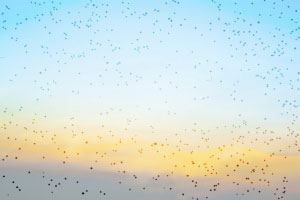 Wilson, A, (2015) Performative Landscape #2, digital print 70 x 100 cms, Ilford Gloss Paper
Wilson, A, (2015) Performative Landscape #2, digital print 70 x 100 cms, Ilford Gloss PaperWhat feelings or images or memories or associations are triggered when you separate and unite with other people?
I feel sensations and memories in the moment that inspire an extraordinary sense of time. Day turning to night, figures and surfaces are visually loaded with sensations and memories. The familiar becomes undone as I view what I see everyday with more attention. Surfaces evoke elaborate structures in my imagination that I know yet feel as if I am seeing them for the first time. I feel a bit like a baby. Movement seems to allow for memories that go further back in time emerge than if I was static. As I separate with light momentarily I am playing hide and seek, I play with light. In unity light’s source ie the sun (portrait landscape—the middle panel) becomes a tactile object that I stroke with the camera–a quick small movement—I know if I stay too long it will burn out the sensor but I dare myself. Its late, the sun is setting, seemingly it’s last flicker is pregnant—its final moments are a promise for more.
Make and break contact with other dancers in the space
If I think of light as a body, separating and uniting with it over time, associations form. It becomes a life force that breathes. It’s only through actions that light’s body in various relative shapes and dynamics inscribe this. In those moments when a decisions are made new experience emerges. I conceive other dancers as surfaces reflecting light and I move to make and break contact. I think these actions and moments as the essence of the art-work—associations triggered through and in collaboration with ‘other bodies’ of light.
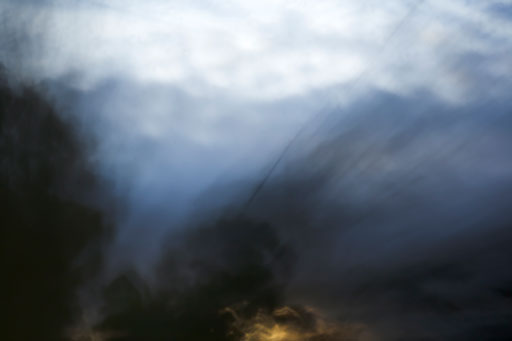 Wilson, A. 2013, Homage to Turner, 130 x 97 cms, digital pinhole print, Museo Portfolio Rag
Wilson, A. 2013, Homage to Turner, 130 x 97 cms, digital pinhole print, Museo Portfolio RagConclusion
Improvisational language and theory is helpful in thinking about out how my visual art practice can be understood. I have gained new knowledge by reading about and considering improvisation in relation to my own practice and become aware of otherwise difficult-to-articulate real effects of my process. There are some similarities between my process and some improvisational practices however contexts and methods differ greatly. I think about the process of reflection I use while working with files resulting from spontaneous movement while shooting as a continuation of movement based practice even though movements are small. It is a bit like moving inside the camera obscura while observing light. New forms of embodiment seem to come out of visual art practice and I think of the prints as drawings made with my body in a performative improvisational moment. By employing Kaplan’s improvisational score to make connections to my process and embodied experiences I have understood cross-discipline within visual art and improvisational practice. I discovered a way to articulate a new sense of embodiment experienced in my process through using Kaplan’s score in retrospect. Finding ways to talk about process from an embodied perspective has been helpful in evolving my practice further providing a way to go deeper into philosophical enquiry around the human condition.
References
- Goldman, D 2010, I Want to Be Ready: Improvised Dance As a Practice of Freedom, University of Michigan Press, Ane Arbor.
- de Spain, K 2003, ‘The cutting edge of awareness: reports from the inside of improvisation’ in Cooper Albright, A & Gere, D (eds), Taken by surprise: a dance improvisation reader, Wesleyan University Press, Middletown, Conneticut.
- Bolt, B 2009, ‘A Performative Paradigm for the Creative Arts’, Working Papers in Art and Design, viewed 7 November 2015.
- Lanza, R Biocentrism / Robert Lanza’s Theory of Everything, viewed 17 November 2015.
- Kaplan, R 2003, ‘Score: Making and Breaking Contact,’ in Cooper Albright, A & Gere, D (eds), Taken by surprise: a dance improvisation reader, Wesleyan University Press, Middletown, Connecticut.

